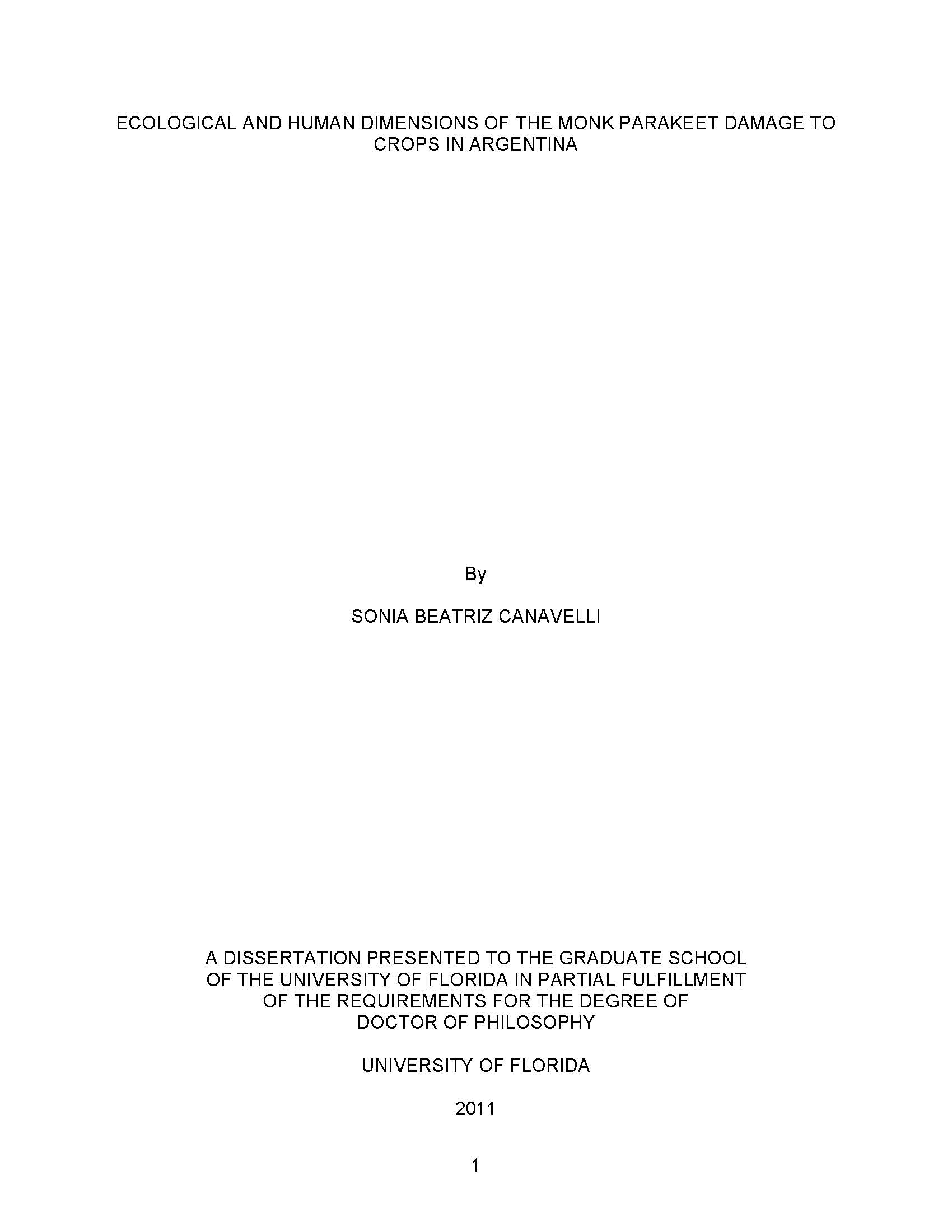Ver ítem
- xmlui.general.dspace_homeCentros Regionales y EEAsCentro Regional Entre RíosEEA ParanáTesisxmlui.ArtifactBrowser.ItemViewer.trail
Ecological and Human Dimensions of the Monk Parakeet Damage to Crops in Argentina
Resumen
The Monk Parakeet (Myiopsitta monachus) is considered among the most important bird pest species causing damage to crops in Argentina. In this study, I explored habitat features influencing abundance and damage of monk parakeets to crop fields and density of nests in inhabited farms with eucalyptus trees at multiple spatial levels. Additionally, I examined socio-psychological and socio-demographic factors influencing farmers´ preferences about management
[ver mas...]
The Monk Parakeet (Myiopsitta monachus) is considered among the most important bird pest species causing damage to crops in Argentina. In this study, I explored habitat features influencing abundance and damage of monk parakeets to crop fields and density of nests in inhabited farms with eucalyptus trees at multiple spatial levels. Additionally, I examined socio-psychological and socio-demographic factors influencing farmers´ preferences about management of monk parakeet damage to crops. Monk parakeet abundance and damage was greater in sunflower than in corn fields. Landscape variables, such as distance to nearest sites with trees, percentage of landscape with trees, and availability of foraging sites for monk parakeets around the crop fields, were more important than local variables in explaining monk parakeet damage to crop fields. However, local variables, such as field area, plant density and
percentage of field border with trees, also were related to damage. Conversely, the density of monk parakeet nests in inhabited farms with eucalyptus trees was not clearly explained by any variable or combination of variables modeled in this study. Farmers preferred population control strategies, such as nest destruction and killing of birds, for decreasing monk parakeet damage to crops. Preferences of farmers for management strategies were related more strongly to attitudes toward monk parakeets than to any other factor considered in this study. Other important sociopsychological factors were perceived efficacy and previous knowledge about
management strategies. Perceptions of magnitude of damage by monk parakeets practically were not related to preferences. Socio-demographic factors, such as age and education, were related to preferences in different ways depending on the management strategy. Based on this study, managers should consider both local and landscape factors when planning management measures to prevent monk parakeet damage to crop and reduce nesting on farms. Additionally, extension actions should be oriented to modifying
attitudes toward monk parakeets as well as communicating and showing the efficacy of alternative management strategies. Given the current uncertainties in the outcome of management actions, an adaptive management approach would be useful to evaluate the efficacy of strategies other than lethal or reproductive control.
[Cerrar]

Director de Tesis
Branch, Lyn;
Descripción
Tesis para obtener el grado de Doctor of Philosophy, de la University of Florida (Estados Unidos), en 2011
Fecha
2011
Editorial
University of Florida
Formato
pdf
Tipo de documento
tesis doctoral
Palabras Claves
Derechos de acceso
Abierto
 Excepto donde se diga explicitamente, este item se publica bajo la siguiente descripción: Creative Commons Attribution-NonCommercial-ShareAlike 2.5 Unported (CC BY-NC-SA 2.5)
Excepto donde se diga explicitamente, este item se publica bajo la siguiente descripción: Creative Commons Attribution-NonCommercial-ShareAlike 2.5 Unported (CC BY-NC-SA 2.5)


